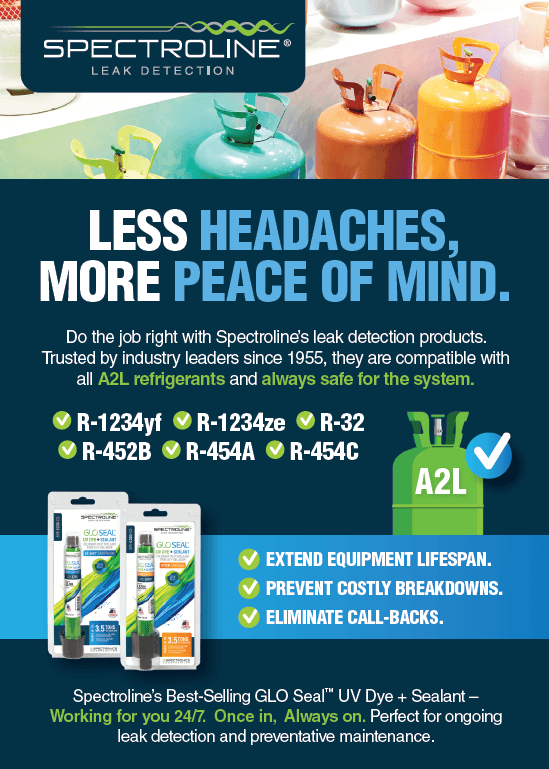Kurze Zusammenfassung der A2L-Kältemittel
Die Verwendung von A2L-Kältemitteln ist eine einfache Möglichkeit, das Treibhauspotenzial zu reduzieren, da sie als leicht entflammbar eingestuft werden und umweltfreundlicher sind als hochgiftige Fluorkohlenwasserstoffe (FKW). Das Erderwärmungspotenzial wurde entwickelt, um die Auswirkungen verschiedener Gase auf die globale Erwärmung vergleichen zu können. Es ist ein Maß dafür, wie viel Energie die Emissionen von einer Tonne eines Gases über einen bestimmten Zeitraum absorbieren, im Vergleich zu den Emissionen von einer Tonne Kohlendioxid (CO2).
A2L-Kältemittel haben einen niedrigeren GWP-Wert, was sie zu einer energieeffizienteren Wahl macht. Ihr Name basiert auf ihrer ASHRAE-Sicherheitsklassifizierung. "A" steht für "ungiftig". A2L-Kältemittel sind ungiftig. Bei sachgemäßer Verwendung sind sie für die menschliche Gesundheit unbedenklich. "2" steht für ihre Entflammbarkeit: A2L-Kältemittel sind mäßig entflammbar. Sie haben eine niedrigere Entflammbarkeitsstufe als A3-Kältemittel (leicht entflammbar). Sie gelten jedoch immer noch als entflammbar und müssen mit Vorsicht behandelt werden. "L" bedeutet, dass sie im Vergleich zu einigen anderen Kältemitteln eine geringere Toxizität aufweisen.
UMSTELLUNG AUF A2L-Kältemittel
Ab dem nächsten Jahr wird die HFKW-Produktion um 40 % reduziert, und der Übergang zu A2L in der Produktion steht kurz vor dem Abschluss. Die Environmental Protection Agency (EPA) hat damit begonnen, das Kältemittel R410-a in neuen HVAC-Systemen auslaufen zu lassen, um es durch umweltfreundlichere, energieeffizientere Alternativen, insbesondere A2L-Kältemittel, zu ersetzen. Erfahren Sie mehr über hilfreiche Tipps für die Umstellung auf A2L im kommenden Jahr in diesem Artikel von ACHR news.
Spectroline's glo seal Produkte sind mit A2L-Kältemitteln kompatibel
Der in GLO Seal enthaltene fluoreszierende Farbstoff AR-GLO® 5 und das nichtpolymere Dichtungsmittel sind mit allen Kältemitteln und Schmiermitteln kompatibel, einschließlich Mineralöl, PVE, Polyolester, Alkylbenzol und A2L-Kältemittel.
HILFE-LINKS
Wo kann man GLO Seal in den USA kaufen?







